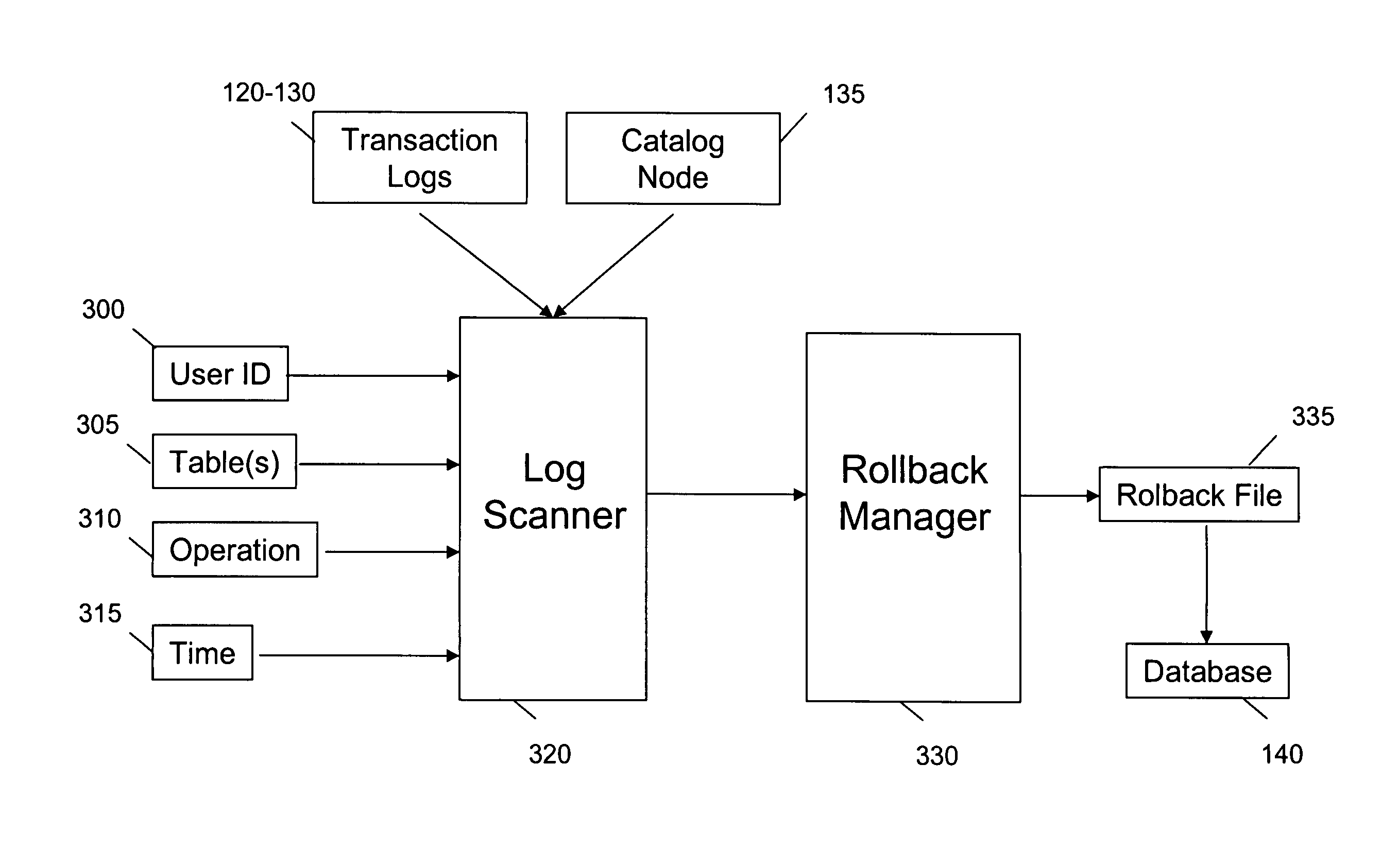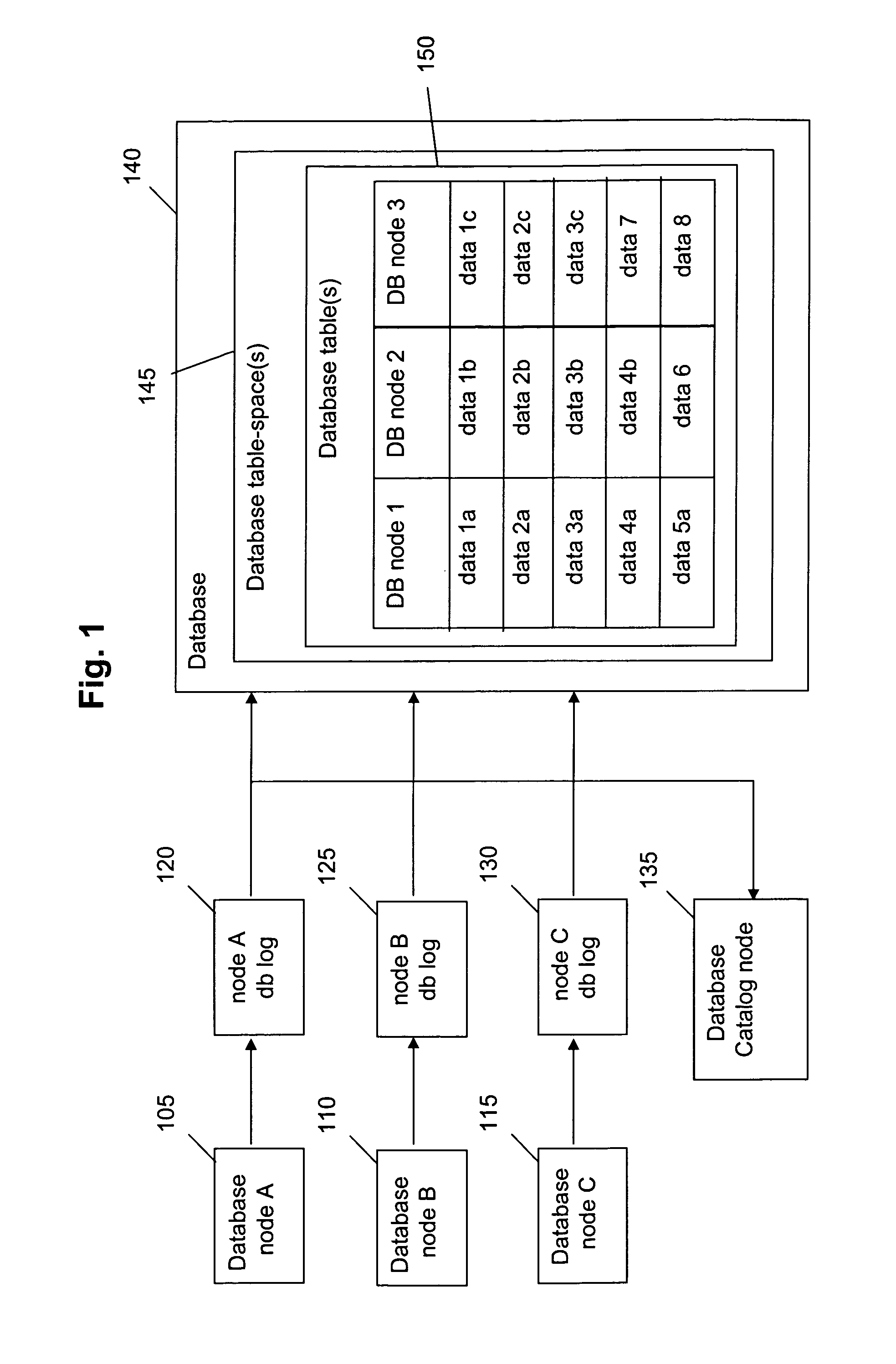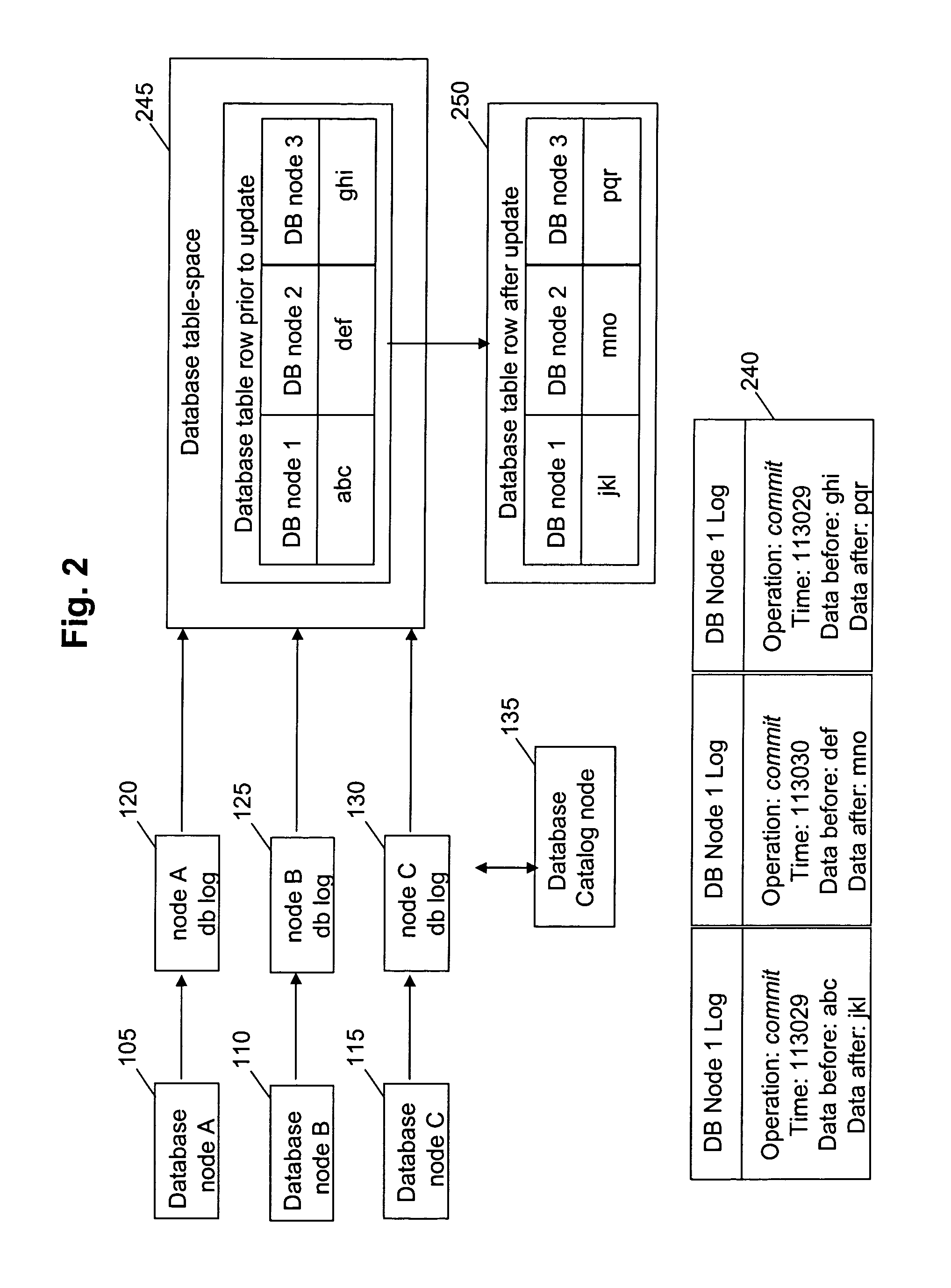System and method for optimizing data recovery in a parallel database
- Summary
- Abstract
- Description
- Claims
- Application Information
AI Technical Summary
Benefits of technology
Problems solved by technology
Method used
Image
Examples
Embodiment Construction
[0024]Referring now to the drawings, wherein like reference numerals designate identical or corresponding parts throughout the several views.
[0025]When table data becomes corrupted or lost, current embodiments of parallel DBMS systems require that the data for the affected table-space be restored to a known good point in time, typically through the manual process of restoring from a tape back-up and then rolling forward with the transaction logs to the latest consistent state. When dealing with very large tables commonly found in data warehouse environments, this can be very time consuming. Additionally, if only a subset of table-space data has been compromised or lost, it is very inefficient to restore the entire table-space. FIG. 1 depicts the basic components of a parallel database in which the present invention is implemented. A table is generally defined as a two-dimensional arrangement of rows and columns and holds data, and the context of this description includes the entiret...
PUM
 Login to View More
Login to View More Abstract
Description
Claims
Application Information
 Login to View More
Login to View More - R&D
- Intellectual Property
- Life Sciences
- Materials
- Tech Scout
- Unparalleled Data Quality
- Higher Quality Content
- 60% Fewer Hallucinations
Browse by: Latest US Patents, China's latest patents, Technical Efficacy Thesaurus, Application Domain, Technology Topic, Popular Technical Reports.
© 2025 PatSnap. All rights reserved.Legal|Privacy policy|Modern Slavery Act Transparency Statement|Sitemap|About US| Contact US: help@patsnap.com



